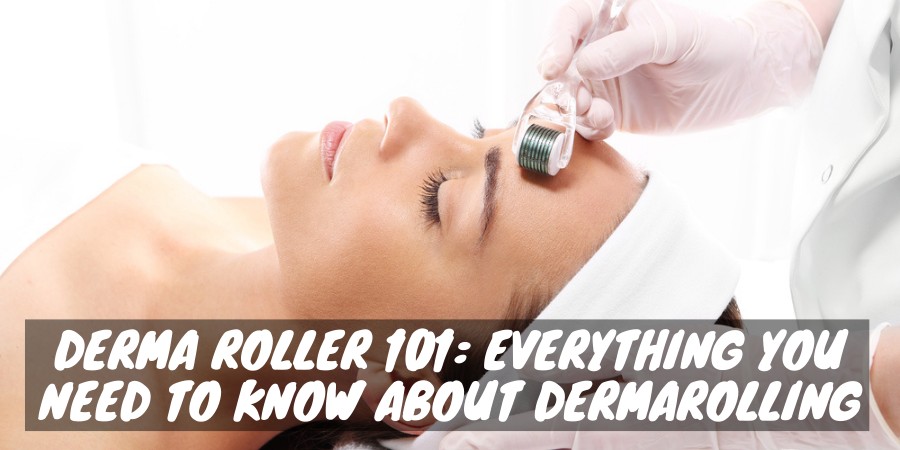If you’ve looked into anti-aging skincare treatments, you’ve probably encountered the term “dermarolling” before.
It’s touted as a fast, reliable way to smooth wrinkles, reduce scarring and rejuvenate your skin.
And many people have the option of doing it themselves in the comfort of their homes.
But just what is dermarolling — and does it really work?
We’ve got everything you need to know about dermarolling right here. Read on to find out if it’s right for you.
What Is Dermarolling?
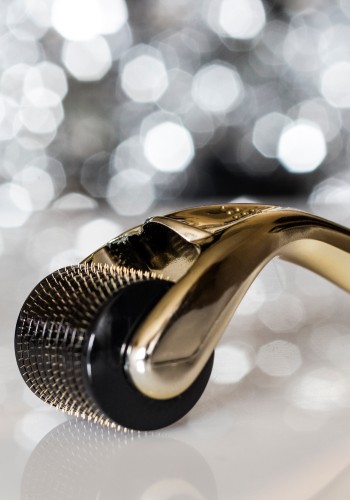
Dermarolling is a type of microneedling, which is just what it sounds like: the insertion of tiny needles into your skin, sort of like microscopic acupuncture.
But rather than targeting specific individual points, microneedling involves the creation of extremely small wounds all over your skin.
A derma roller is a tool that, at first glance, resembles a torture device. At the end of its handle sits a rolling cylinder covered in hundreds or even thousands of needles.
You roll the derma roller over your skin, allowing the needles to puncture it as you go.
So why would you possibly want to do that?
Well, as it turns out, there are a lot of reasons.
What Are the Benefits of Dermarolling?
Chances are, if you want to improve your skin and resolve chronic problems, a derma roller can help you.
The microscopic wounds produced by a derma roller actually help your skin in the long run. They cause an increase in collagen and elastin production — two proteins that are crucial for skin healing and youthfulness.
Your skin uses these proteins to repair the wounds caused by the derma roller. Then it puts any leftover proteins to work on previously-existing skin issues.
These include wrinkles, fine lines, acne scarring, sagging skin, stretch marks, discoloration, blemishes and enlarged pores.
Even if you’re not concerned with any of these issues, the extra collagen and elastin will prevent them from forming in the future, keeping you looking younger for longer.
How Do You Prepare for Dermarolling?
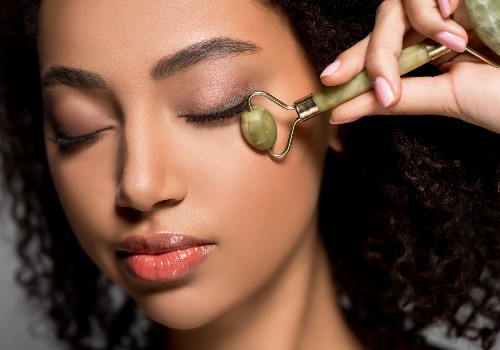
Because dermarolling creates open wounds (albeit tiny ones), you’ll need to make sure that your skin, hands and tools are as clean as possible before beginning.
Cleanse Your Skin
Thoroughly cleanse your skin and hands, ideally with a foaming antiseptic cleanser to kill any bacteria that are present.
If your cleanser isn’t already pH-balanced, you’ll need to use a pH-balancing toner afterwards to get your skin ready for dermarolling.
And if you’re using a derma roller with needles over 0.5mm in length, you should wipe your skin with 70% isopropyl alcohol to make sure it’s as sterile as possible.
Disinfect Your Derma Roller
You’ll also need to disinfect your derma roller. Fill a cup with 70% isopropyl alcohol, Barbicide or a similar disinfectant, then let the derma roller soak in it for 15 minutes.
When you’re done soaking the derma roller, lay it out to dry on a clean paper towel.
Numb Your Skin
Finally, you may wish to apply a lidocaine numbing cream to your skin before using the derma roller. If your pain tolerance is low, or if you’re using a derma roller with needles over 1.0mm, don’t skip this step!
Follow the manufacturer instructions for applying the numbing cream, then wipe it off completely before using the derma roller. Don’t leave any on your skin or it’ll seep into the wounds created by the derma roller.
How Do You Use a Derma Roller?
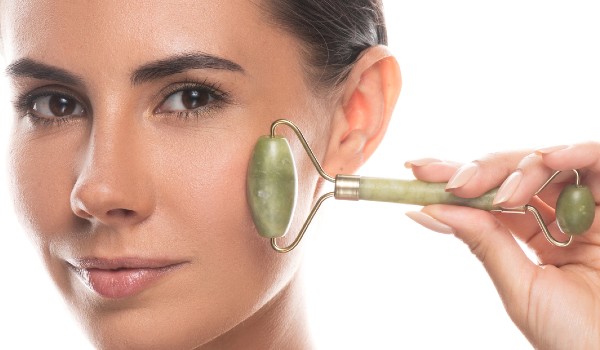
Proper dermarolling technique is critical to getting good results. Here’s a step-by-step breakdown of the process.
Split Your Face Into Sections
Don’t just start dermarolling your face willy-nilly. Instead, split it into sections and work on one at a time.
Treat your forehead, nose, cheeks, and chin as individual sections. These smaller sections are easier to deal with and make it less likely that you’ll miss spots.
Never use a derma roller on your eyes — the skin is just too thin and delicate to tolerate dermarolling.
And avoid using the derma roller over acne or open wounds. Doing so will cause the derma roller to pick up bacteria and distribute it over the rest of your face, causing widespread infection.
Roll Horizontally Over One Section at a Time
Take your derma roller and roll it once horizontally across your targeted section, starting from the center outwards. The exception is the nose, which should be rolled downward.
Don’t press too hard or too lightly. You should be able to feel the needles, but it shouldn’t be super painful.
Make sure to lift the roller straight off of your face at the end of the roll. If you don’t lift straight up, the needles will snag on your skin, creating scratches rather than microscopic wounds.
Roll over the same spot three to eight times. The longer your needles, the fewer repetitions your skin will be able to tolerate.
Repeat the horizontal rolling process until you’ve covered the entire targeted section.
Roll Vertically Over the Same Section
When you’ve finished your horizontal rolls over your targeted section, it’s time to roll vertically over that same section.
Perpendicular rolling ensures that you get even derma roller coverage without putting too much stress on any one area of your skin.
You can also start with vertical rolls, then follow up with horizontal rolls — the order doesn’t matter. The important part is to roll in two stages, with the second round running perpendicular to the first.
Rinse Your Face with Water, Then Follow with Basic Skincare
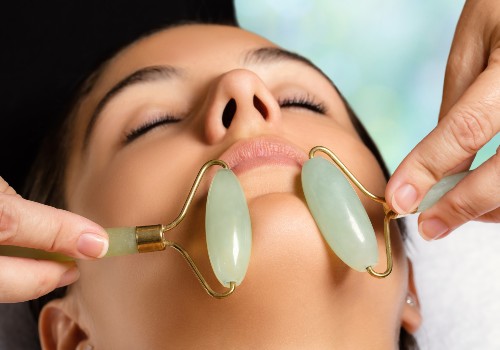
When you’re done dermarolling, rinse your face with clean water. Don’t use any other products during this rinse.
You can then follow up with a basic skincare routine. Your skin will be extremely sensitive after dermarolling, so it’s important to avoid products with potentially irritating active ingredients.
This means skipping products that contain tretinoin, benzoyl peroxide, salicylic acid, AHAs or high concentrations of vitamin C or retinol.
However, you can use serums that contain gentler ingredients and antioxidants like hyaluronic acid, peptides, aloe, red algae, green tea or licorice extract. Your dermarolled skin will absorb these ingredients more readily, enhancing their benefits.
Clean Your Derma Roller
Fill a container with water and add a few drops of dish soap. Swish your derma roller around in the soapy water to remove the blood and skin cells.
Then rinse the derma roller and soak it again in 70% isopropyl alcohol or Barbicide for at least 15 minutes. Let it dry on a clean paper towel, then store it in a case.
Is Dermarolling Painful?
If you have a high pain tolerance and use very short needles, you might not find dermarolling painful.
But otherwise, you’re likely to experience at least a little pain when dermarolling. The longer the needles, the more painful the experience will be.
However, the pain shouldn’t be excruciating. If it is, you may be pressing the derma roller too hard or using needles that are too long for you to tolerate.
Unfortunately, pain is beauty when it comes to dermarolling. The resulting inflammation is what activates your skin’s collagen and elastin production, so using anti-inflammatory pain medications like ibuprofen or aspirin is a no-no after dermarolling.
How Often Should You Use a Derma Roller?
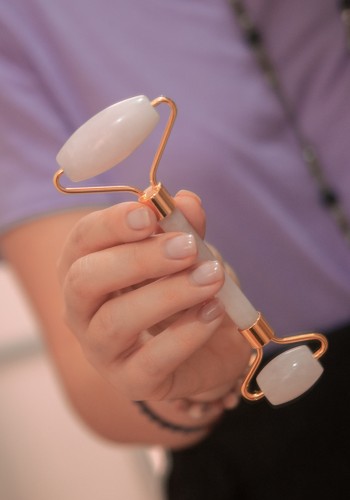
How often you dermaroll depends on your skin’s sensitivity and the length of your needles.
For the shortest needles (0.25mm or shorter), you can dermaroll every other day if your skin can handle it.
A 0.5mm derma roller should be used once a week to start. You can increase the frequency if your skin responds well, but don’t use it more often than three times a week.
1.0mm derma rollers should be used no more than once every 10 to 14 days, and 1.5mm rollers should only be used once every 3 to 4 weeks.
Which Derma Roller Needle Length Is Best for Me?
Your ideal derma roller length depends on the specific skin issues you’re looking to treat. Generally, the more severe or permanent the issue, the longer the needles you’ll need to use.
Always start with the smallest possible derma roller and increase the size if you’re not seeing results.
0.25mm Derma Roller
A 0.25mm derma roller is great for minor skin issues like enlarged pores, blemishes and discoloration.
It’s also ideal for those who don’t have specific skin issues but simply want to prevent signs of aging or get tighter-feeling skin.
Derma Roller 0.5mm
For fine lines and shallow wrinkles, rough skin, moderate discoloration and light sagging, use a 0.5mm derma roller.
It’s also recommended to start with this size if you’re trying to treat deeper or more severe issues. You can then move on to longer needles if the 0.5mm needles aren’t sufficient.
1.0mm Derma Roller
Use a 1.0mm derma roller if you have light acne scars, severe discoloration, persistent sagging or sun damage.
The 1.0mm length is also effective on deeper wrinkles that need more collagen than a 0.5mm derma roller can stimulate.
1.5mm Derma Roller
This is the longest derma roller length you should use at home. Anything longer carries too many risks to be used without a professional.
Use a 1.5mm derma roller for deep wrinkles, deep acne scars, extremely saggy skin, stretch marks or large surgical scars.
Should I Do Dermarolling at Home or See a Professional?
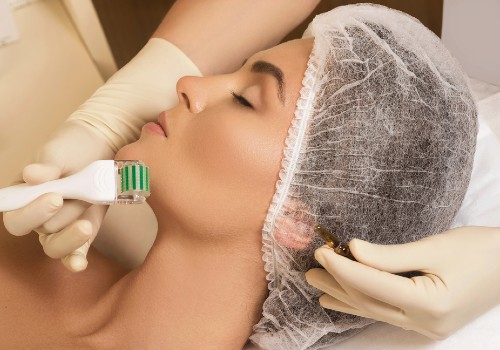
If you’re using a derma roller with 1.5mm or shorter needles, and if you’re comfortable with performing the procedure yourself, at-home dermarolling can save you a lot of money.
But some people are better off going to a professional for dermarolling.
These include those with highly sensitive skin and anyone wanting to use needles longer than 1.5mm.
Due to their extensive experience and high-quality equipment, professionals can often achieve better results in less time than you’d need at home.
However, if you’re on a budget and don’t mind investing time into your dermarolling journey, at-home dermarolling is by far the most affordable option.
Are There Any Side Effects from Dermarolling?
Side effects from dermarolling are common, but they’re typically minor and very short-lived.
During the dermarolling session, you’ll likely bleed a little from the wounds created by the derma roller. This is normal and the bleeding should subside very quickly.
After the session, your skin will be red and slightly swollen. Again, this is normal and you should allow the inflammation to subside on its own rather than treating it with medication.
You’ll likely feel a pulsing sensation in your skin due to the increased blood flow. The skin may also feel hot or tender like a sunburn, and it may peel like one as well.
A few days after your treatment, your skin may become dry and rough, and you may see bruises at the treatment site. Avoid sun exposure during this time as your skin is particularly susceptible to damage as it heals.
The biggest risk from dermarolling is infection, which can occur if your derma roller or skin is dirty, or if you use the derma roller on open wounds. To prevent this, always start with clean tools and skin, and never derma roll over breakouts.
What Derma Roller Results Should I Expect?
After your first dermarolling session, you may see subtle results within a few days. Your skin may seem more plump and taut than it did before.
However, you should expect to see significant results after one or two months of consistent dermarolling.
That’s about how long it takes collagen production to reach optimal levels, and once it does, you should start seeing smoother, brighter skin.
The below list is the top 5 best selling rollers listed on Amazon. It’s based entirely on what people are actually buying (using product sales-numbers) as well as actual customer-verified reviews so you can confidently trust the results.
[amazon bestseller=”derma roller” items=”3″]
